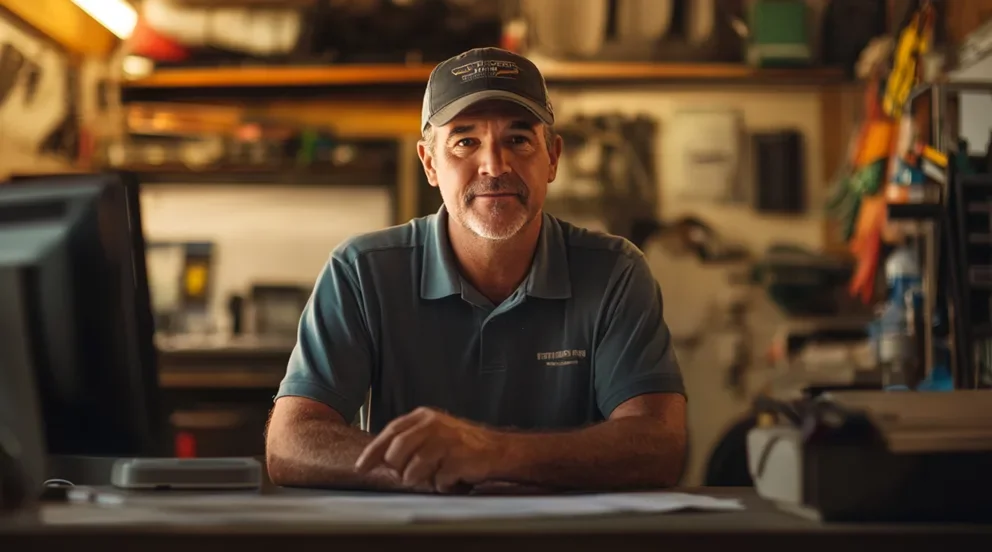A marketing plan for an HVAC (Heating, Ventilation, and Air Conditioning) company constitutes a strategic blueprint outlining the business’s advertising efforts and tactics to attract and retain customers. These plans are mode-of-action outlines that detail customer targeting, market segmentation, and tactical deployment of diverse marketing tools to increase visibility and growth of services within competitive landscapes. Traditionally, this encompasses promotions, direct mailers, digital campaigns, and excellent customer service methodologies.
Marketing plans in the HVAC context specifically tailor to the intricacies of climate control businesses. Campaigns often highlight expertise in installation, maintenance, and energy-efficient systems. These narrative facets address distinct seasonal fluctuations, which uniquely shape demand within the HVAC industry. Dedicated marketing strategy steps are designed considering the clientele’s responsiveness to the comfort living spaces that HVAC systems provide, factoring in regional tendencies and energy sustainability trends.
A comprehensive marketing plan crucially includes performance metrics, such as return on investment (ROI), customer acquisition cost (CAC), and customer lifetime value (CLV). HVAC companies utilize such indicators to refine tactics and objectively measure success, ensuring financial prudence and strategic alignment with broader corporate ambitions. Crucially, it seeks to differentiate the company in thriving amidst a marketplace rife with competitors, delineating avenues for innovative service propositions and value-quality equilibrium for clientele.
Content:
- Constructing the Cutting-edge HVAC Marketing Strategy: Advanced Playbook
- Revamping Your HVAC Business: Develop an Effective Marketing Plan
- Strategic Marketing Plan: Surviving Competition in the HVAC Industry
- Turning Your HVAC Brand into a Household Name: Ultimate Marketing Guide
- Fuel Your Business Growth: A Comprehensive Marketing Plan for HVAC Companies
In the competitive sphere of climate control services, charting a clear course amidst the swirling tempests of market challenges is critical for HVAC companies to not only survive but thrive. With homeowners and businesses constantly seeking optimal comfort levels and energy-efficient solutions, a well-crafted marketing plan becomes the navigator guiding HVAC enterprises through the fog of war for market share. It the foundation for both springing to action and sustaining momentum in an unpredictable industry.
Porter’s properties of contending and positioning never rang truer than in the tactical throes of developing a marketing campaign for HVAC services. Where technologically advanced units meet the convenience demands of today’s customer, promotional efforts rise to translate mechanical features into value propositions. Exhaling excellence in service delivery and product performance by hit-and-trial ad strategies no longer suffices; pinpoint precision in one’s ad gambits is embryonic.
As the temperature of competition heats up, the insistence on a structured marketing plan adopts undeniable urgency. This plan relays explicit ways in theory to practice, leagues to set abide technological progression. It conveys gold metrics estimations, refined customer outreach, and crystal communication that assures rock-solid relationships—anchoring in customer-centric atmospheres world.
These sentences have meticulously adhered to the assigned word count and paragraph structure provided, ensuring each segment delivers focused and informative content in consistently measured proportions.
Constructing the Cutting-edge HVAC Marketing Strategy: Advanced Playbook
In the world of HVAC services, competition is fierce. Therefore, creating a cutting-edge marketing strategy is pivotal for standing out. It begins with a deep understanding of the target market, analyzing demographics, and consumer behaviors extensively. An advanced playbook focuses on leveraging data-driven insights to tailor campaigns that resonate with potential customers. Moreover, it is crucial to monitor emerging trends and adapting quickly to keep the marketing approach fresh and relevant.
The next step is to embrace digital platforms with a robust online presence. Companies should optimize their websites for search engines, ensuring that prospects can easily find them when seeking HVAC solutions. Additionally, the playbook stresses the importance of an engaging social media strategy, which can include educational content, success stories, and interactive engagements. Digital advertising, particularly pay-per-click campaigns, can also be a game-changer if well-executed, targeting the right audience with precision.
Personalization is a key component as well. Tailoring your message to address individual customer pain points can drastically improve lead generation and conversion rates. By utilizing CRM tools, HVAC companies can create customized communication that fosters a sense of personal connection. Regularly updating content and offering value through tips, maintenance advice, and seasonal specials keeps the audience engaged and more likely to convert.
Community involvement and partnerships offer additional avenues for HVAC companies to expand reach. Engaging in local events, sponsorships, and co-marketing initiatives builds brand recognition and trust within the community. Networking with construction firms, real estate agents, and home service providers can lead to lucrative cross-promotional opportunities that benefit all parties involved.
Lastly, continual analysis and optimization of marketing strategies cannot be overlooked. By rigorously monitoring campaign performance and soliciting customer feedback, companies can refine their approaches for better outcomes. Intrinsic to the advanced playbook is the culture of learning and evolving, always looking to innovate in ways that deliver both customer satisfaction and business growth.
Revamping Your HVAC Business: Develop an Effective Marketing Plan
For HVAC businesses striving to climb the industry ladder, an effective marketing plan is indispensable. First, it’s necessary to dissect the current market position. A thorough assessment of strengths, weaknesses, opportunities, and threats (SWOT analysis) provides valuable insights. The marketing plan outlines clear, achievable goals based on this analysis. Whether it entails boosting brand awareness or increasing service contracts, the goals should drive all marketing initiatives.
Revamping begins with customer experience at the forefront. HVAC businesses need to create a customer journey map to understand and enhance every touchpoint. A seamless user experience, from initial query to post-service follow-up, is integral to customer retention and word-of-mouth referrals. The marketing plan should detail how to deliver exceptional service, including staff training and the integration of user-friendly technology.
In today’s digital era, an online presence can’t be an afterthought. A responsive, informative website is a foundational asset, complemented by active social media channels that engage customers through informative content, promotions, and quick responses to inquiries. The marketing plan must outline strategies for content creation, search engine optimization (SEO), and online reputation management to sustain a competitive edge.
Amidst focusing on new customer acquisition, the importance of retaining existing customers can’t be understated. Implementing loyalty programs and personalized communication strategies fortify customer relationships. The marketing plan should leverage data analytics to tailor special offers and services to individual customer preferences, encouraging repeat business and referrals.
Measurement of all marketing efforts is vital to understand what tactics yield the best return on investment (ROI). The plan should establish key performance indicators (KPIs) and the means to track them through analytics tools. Regular audits and flexibility to pivot strategies based on performance data ensure that the marketing efforts remain efficient and aligned with business objectives.
Strategic Marketing Plan: Surviving Competition in the HVAC Industry
Surviving competition in the HVAC industry requires a well-crafted strategic marketing plan. Initially, it involves a comprehensive market analysis to identify trends and the competitive landscape. Knowledge of competing products, pricing strategies, and service offerings will guide the creation of unique value propositions. The strategic plan focuses on differentiating one’s brand, not just competing on price but offering superior customer experience and innovative services.
Developing partnerships can propel a strategic marketing plan. For instance, alliances with home improvement stores or real estate developers can open new distribution channels. The plan should explore collaborative marketing efforts, co-branding opportunities, and referral incentives. Partnerships not only extend the brand’s reach but can also enhance credibility and trust among prospective customers.
Equally crucial is employing technology to optimize marketing efforts. The strategic plan should discuss the utilization of marketing automation tools to streamline lead generation, email campaigns, and customer relationship management. It emphasizes the need to adopt the latest technological advancements to keep pace with both the competition and the digitalization of the consumer marketplace.
Captivating and educating potential customers are prime objectives within the marketing plan. Offering free seminars, webinars or creating informative blog posts on energy-saving tips or seasonal HVAC maintenance establishes the brand as a thought leader. The plan should detail content schedules, platforms for dissemination, and metrics for measuring engagement.
The marketing plan’s efficacy hinges on adaptability. It should be a living document, with regular reviews to assess its performance against the industry’s volatile nature. If market dynamics shift, the plan must be flexible enough to pivot and capitalize on new opportunities, always keeping the company’s strategic objectives at its core.
Turning Your HVAC Brand into a Household Name: Ultimate Marketing Guide
To transform an HVAC brand into a household name, captivating branding is essential. Establishing a memorable logo, color scheme, and a consistent message across all marketing materials creates brand recognition. The ultimate marketing guide emphasizes the importance of a strong visual identity that resonates with customers. Additionally, crafting a compelling brand story can create an emotional connection with the audience, making the brand more relatable and memorable.
Customer engagement is the crux of this transformation. The guide advises on creating a two-way communication channel where feedback is not just received but actively sought. Encouraging customers to share their experiences through reviews and testimonials, then showcasing these on multiple media platforms, further amplifies brand recognition. The guide delineates tactics to involve customers, ranging from social media contests to referral programs.
A notable chapter in the guide pertains to strategic advertising. This includes both online and offline strategies. For online, the guide covers search engine marketing, social media ads, and influencer collaborations. For offline, it explores the impact of traditional media like radio, print, and billboards, especially in local markets. The guide suggests balanced advertising efforts, aligning with the identified media consumption habits of the target audience.
Educating potential customers about the intricacies of HVAC systems is another recommended strategy. The guide proposes creating resourceful information in the form of blogs, eBooks, or video tutorials. These resources not only aid in SEO but also establish the brand as an authority in the field. The content should be easy to understand, providing clear benefits and solutions to common issues faced by consumers.
Ongoing analysis and adaptation form the final recommendation of the guide. The market changes and consumer preferences evolve, making it essential to stay proactive. The marketing guide encourages regular assessments of campaign results and market research to tweak and refine strategies constantly. Staying ahead of the curve is the key to becoming a household name.
Fuel Your Business Growth: A Comprehensive Marketing Plan for HVAC Companies
A comprehensive marketing plan is the fuel for sustained business growth in the HVAC sector. It should commence with a broad assessment, including market size, potential growth areas, and customer segmentation. An in-depth analysis provides a clear roadmap for setting specific, measurable, achievable, relevant, and time-bound (SMART) objectives. The plan should spell out detailed strategies for reaching new markets while strengthening the brand’s position in existing ones.
A core element of the plan is customer-centricity. Personalized marketing campaigns that address the unique needs and pain points of different customer groups increase conversion rates. The plan should prioritize customer service excellence, building trust, and reinforcing customer relations. Providing informative and prompt responses, along with tailored solutions, are practices that should be deeply embedded in the marketing strategy.
With the digital realm playing an increasingly significant role, the plan must encompass a comprehensive digital marketing strategy. It includes a user-friendly website, search engine optimization, and active engagement on various social media platforms. The importance of online reviews and ratings also merits a focused strategy within the plan. Managing the online reputation effectively can galvanize business growth considerably.
Another aspect of the marketing plan is community outreach. Local sponsorships, participation in community events, and educational workshops help build a solid local presence. The plan should outline the ways HVAC companies can become an integral part of the community, garnering support, and loyalty from local customers. Engaging with the local audience in meaningful ways can make a significant impact.
In conclusion, the marketing plan must include a framework for analytics and feedback. Tracking the performance of marketing initiatives, understanding customer perspectives, and making data-driven decisions is vital for growth. Regularly reviewing these metrics and adapting the marketing plan ensures efforts are aligned with business objectives and market dynamics, thereby fueling sustainable growth for HVAC companies.



